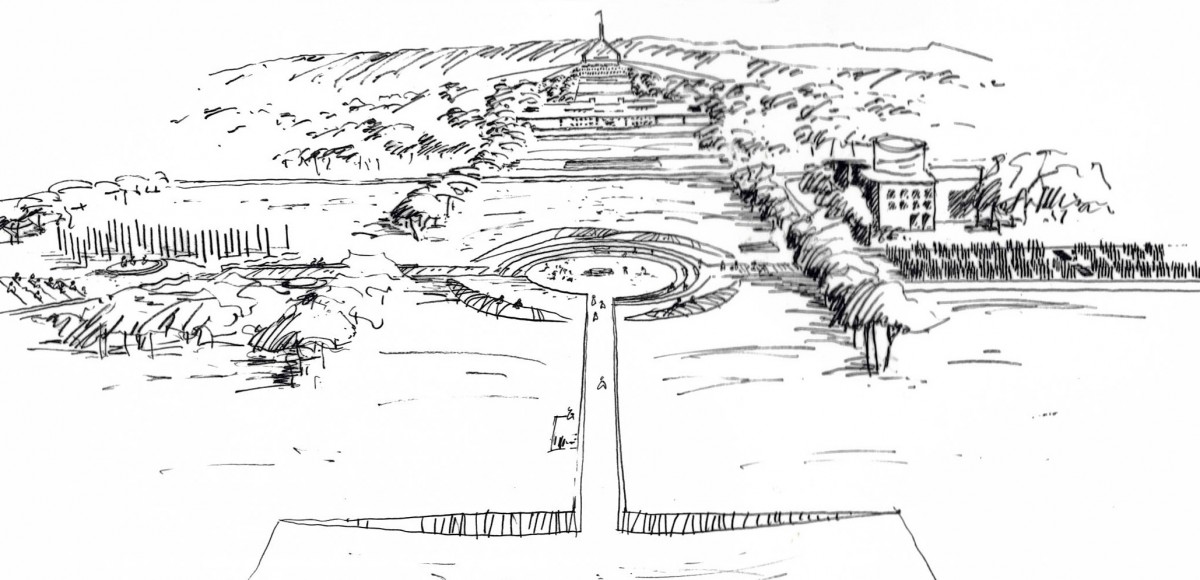Reconciliation Place
LOCATION
Canberra, Australian Capital Territory
YEAR
2001
CLIENT
National Capital Authority
TEAM
Umbaco Landscape Architects | Order Architects | Jane Cavanough and Pauline McLeod (Aboriginal story teller)
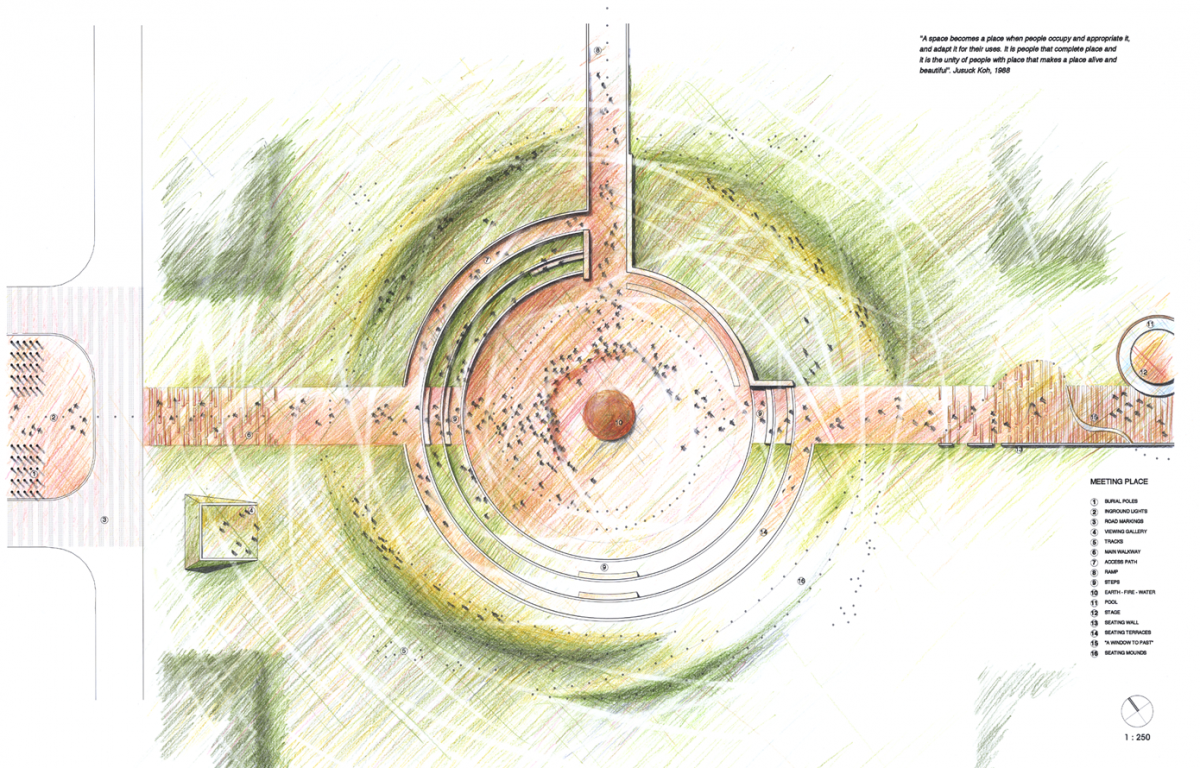

Reconciliation Place
Awards: Commendation Award in Design Competition, Reconciliation Place Commission, 2001
In 2001 the National Capital Authority held a national competition to design “The Reconciliation Place” in the significant space between the High Court of Australia, National Portrait Gallery, Questacon – National Science & Technology Centre and Lake Burley Griffin, in Canberra. Umbaco entered this competition as a team leader of architects and artists including an aboriginal storyteller.
The Umbaco team was awarded one of the 7 commendations out of 36 submitted entries.
The critical question to shape the design concept was: what we need to do as a society so that indigenous culture will be understood? As a team we believed that education was the most important tool, especially education of young people. So, we wanted to find a concept which would educate people in a dignified and respectful way. We aimed to design a space that would create a peaceful atmosphere within a spiritual framework that could be overlaid with individual ideas gradually over time.
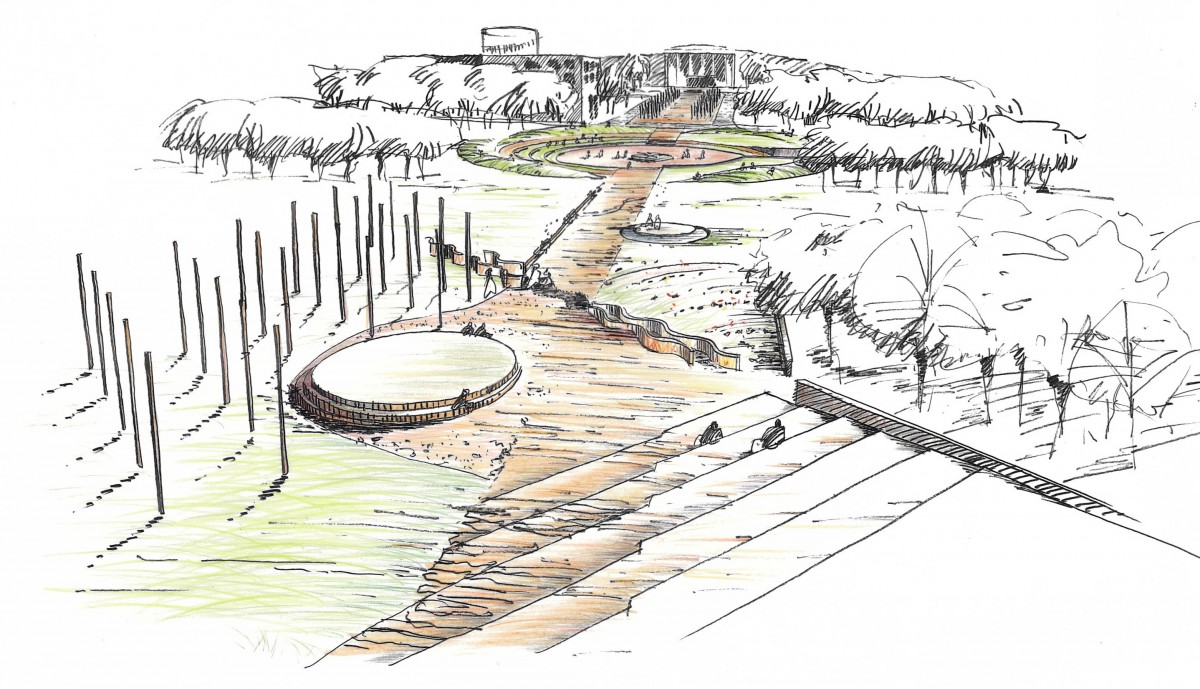

The physical focal point of our design was the meeting place in the centre of the major axes. This meeting place or Bora was the place of the initiation ritual, the most important ceremony in the tribal community. The Bora ring has always been a dynamic – an ever-changing feature in the indigenous landscape – being deepened by people dancing in it over the years.
We determined that one fundamental aspect of reconciliation between European and Indigenous cultures is recognition of the contrast between the two totally different historical timelines: the linear European timeline and the “dreaming” – a freely meandering curve through the landscape just like the “Rainbow Serpent”. Each timeline would approach the Bora from opposite sides and would represent events in Indigenous history and become a memorial with burial poles decorated by Indigenous artists from their respective communities.
Hand sketches by Jana Osvald
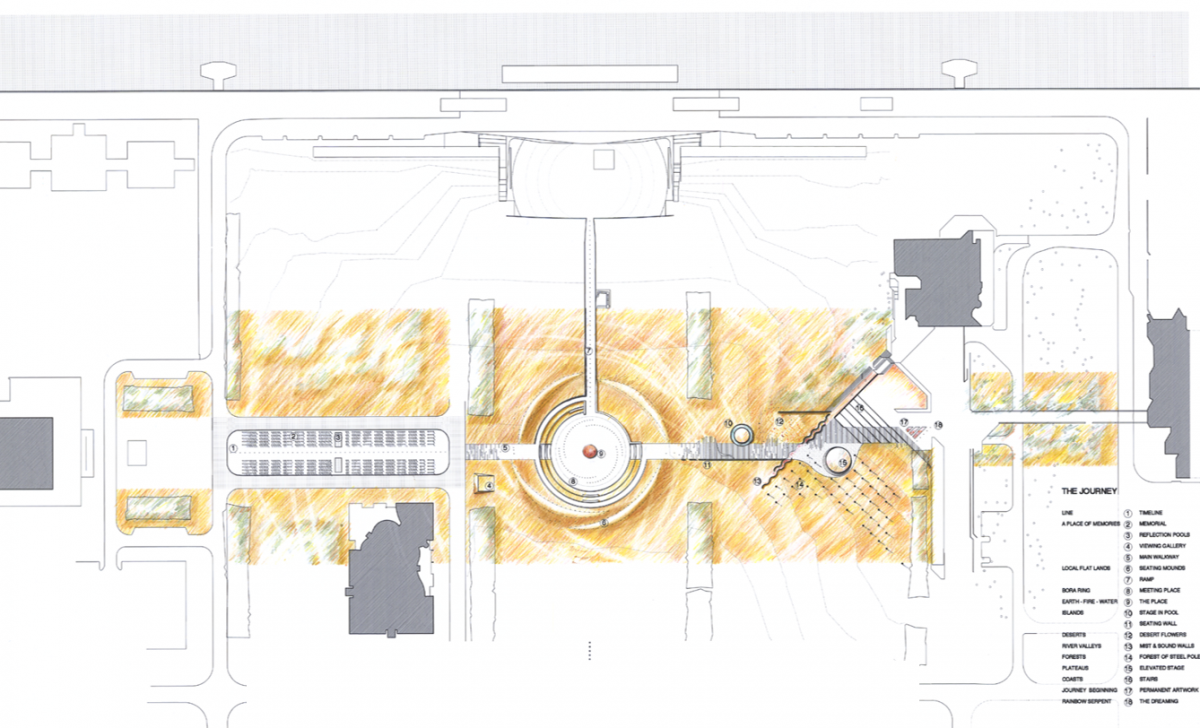
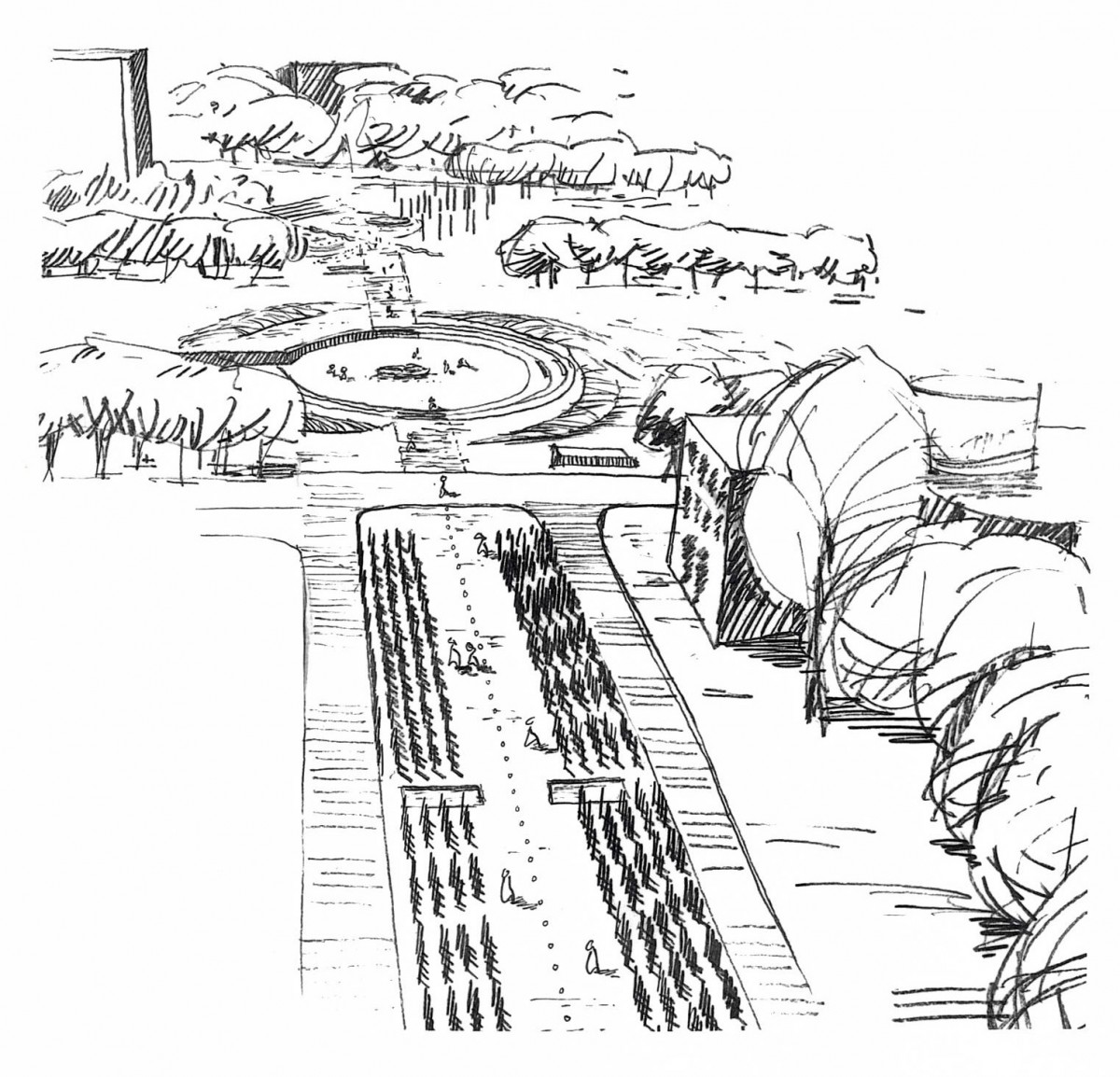
The “dreaming” was also to be a dynamic component of our design. It would represent “… the events, actors and relationships established that are of significance, rather than the time when they were revealed…” (Isaacs, J; Australia’s Living Heritage). To represent indigenous people of all areas we borrowed from indigenous graphic symbols to picture landform features of respective terrains for each community:
People of coastal regions marked by seating terraces
People of islands being a stage surrounded by permanent circle of water
People of river valleys represented by meandering mist and sound walls
People of plateaux occupying an elevated stage
People of forests and mountains represented by a ‘forest’ of steel poles
People deserts portrayed by artwork representing desert flowers
Local Ngun(n)awal people, as people of flat lands, would take up the gently rolling hills at the very focus of the journey – at the Bora ring.
The centre of Bora is the magnet of the cosmic spiral and is represented by a large sculpted form which encapsulates the three elements or states of matter constantly being in a process of change. –earth, fire and water .The water is represented here in its very Australian essence – water, so sparse, often escaping from cracks of rocks to form a giant waterfall at the other end. The source of water is concealed, and may emerge as mist at some other place.
The night transforms water and mist into a live, lava like substance. The previously cold art form would be transformed into a warm glowing element – the fire at the very centre of the Bora.
And this is where we finished our journey. Where the serpent of The Dreaming wanders in – but can not reach the centre of Bora Ring just yet…
